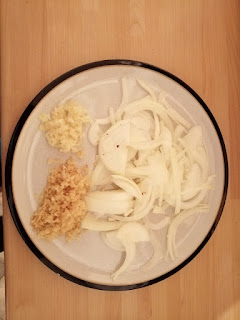
South Korean flag
I kind of like it
I kind of like it
It takes a lot to become an expert on a particular topic, especially if you're talking about an entire country. Take knowledge of Korea, for example. I recently got rid of a Hyundai car that I'd had for for 8 years, so that pretty much makes me an expert on Korea. Basically, I'm Kim Jong Un. To be honest, he's probably not the best person to compare yourself to as he's a brutal dictator who's as mad as a hatter, and he's got nuclear weapons. He's basically an oriental, slightly more agreeable version of Donald Trump, with better hair (which is saying something as, let's face it, KJU's hair is fucking terrible) though is less likely to be in jail come the start of 2021 (this prophecy might not age well, so ignore it if I'm wrong). Saying all this, to an ignorant Westerner like me, there's not a lot of choice in well known Koreans in the Western public sphere. Apart from him, there's Psy, who sang Gangnam Style; and there's Oddjob from Bond movie, Goldfinger; and the bloke who created the Moonies, Sun Myung Moon. Oh, and speaking of Moons, there's also Ban Ki-Moon, former UN Secretary General. This is more of a yardstick of my general ignorance of Korean culture, and not of the fact that there aren't large numbers of famous Koreans. I mean, K-Pop alone has probably hundreds of well known people, but I'm not really an afficianado and couldn't name any of them, apart from Psy, if he counts. We do owe K-Pop fans a debt, however, as it was a group of K-Pop fans that sabotaged a Trump election rally to ensure it was less than half full. thus rendering the massive stadium booked for the event looking pitfiully empty
Famous Koreans
(clockwise from top left: Bond baddie, Oddjob (the character is Korean, but the actor is actually Japanese-American wrestler Harold Sakata); Cult leader and self-proclaimed Messiah, Rev Sun Myung Moon; Gangnam Stylist, Psy and former UN Director General, Ban-Ki Moon.
(sources of images https://en.wikipedia.org/wiki/Oddjob, https://www.imdb.com/name/nm0600671/ https://news.harvard.edu/gazette/story/2014/11/u-n-secretary-general-ban-ki-moon-honored/, https://www.bbc.co.uk/news/technology-20483087
Oppan Gangnam Style!
Apparently it's a satirical song about rich people in Seoul
Apparently it's a satirical song about rich people in Seoul
What else do I know about Korea? Well, obviously, it's not one, but two Koreas following the war in the 50s, or, to use a football cliche, a country of two halves. It's got a lot of contradictions. It's a country that was literally torn apart by conflict, but has given the world a sport that's so violent, its aim is to try and kick an opponent's arsehole out through their mouth, taekwondo. It's a modern, high-tech country that clings onto traditional values, despite having American culture rammed down its throat. Hell, even the flag of S Korea features the yin-yang symbol (see above)
So, this is a cooking blog, where's the recipe? Well, I've covered dishes from at least three corners of the world, if not four, but so far not Korea. To be honest I didn't know much about Korean food, apart from the offerings from a great Korean restaurant in Manchester called Koreana, which I went to a few times and does great food. To my shame, I can't remember much about it (mainly because I was usually pissed by the time I got there), but the barbecued beef ribs were sublime, and Korean BBQ is probably the most well known contribution of Korea to world cuisine. Otherwise the most famous dish of Korea is probably the fermented cabbage of kimchi. The third most famous foodstuff of Korea is probably gochujang, a fermented soya bean paste with chilli. As soya bean products go, it probably just scrapes into the top 10 in terms of international recognition, after soy sauce, hoisin sauce, tofu, black bean sauce, yellow bean sauce etc. Don't be fooled by the fact you might not have heard about it before, it's a fantastic ingredient, with the rich flavour of fermented beans and a deep, but subtle, chilli heat which makes for wonderfully warming and filling stews like this. This is another of those recipes that you try once and know it's a keeper, and that you'll make again and again.
TIMING
Preparation: 15 minutes
Cooking: 30 minutes or so on the hob plus 4 or more in the slow cooker (see notes for alternative timings using hob or oven)
INGREDIENTS
2 tbsp vegetable oil
1 leek, trimmed, tailed, cleaned and sliced into 1cm discs
2 garlic cloves, crushed
A thumb-sized piece of ginger, grated
200g pork loin fillet, cut into bite-sized chunks
250g potatoes, peeled and cut into 2cm cubes
150g mushrooms, chopped
1 red or green chilli, finely sliced (or pinch of dried chilli flakes)2 tbsp gochujang paste
1 tbsp sesame oil
The main flavours
(from left, clockwise: garlic, ginger, gochujang paste, chilli flakes)
(from left, clockwise: garlic, ginger, gochujang paste, chilli flakes)
RECIPE
Heat up the oil in a heavy pan and add the leeks, frying to soften for a couple of minutes
Heat up the oil in a heavy pan and add the leeks, frying to soften for a couple of minutes
Add the ginger and garlic and continue to fry
Throw in the potatoes and mushrooms and continue to sautee for a couple of minutes.
Stir in the gochujang paste and chilli
Stir well and bring to a gentle simmer.
Transfer to the slow cooker, if you're using it, cover, and set to medium for four hours or more.
In the pan before putting in the slow cooker
Serve with rice (either plain or egg-fried) to soak up the rich, red sauce.
Makes enough for 2 people easily, with some left over for lunch the next day.
NOTES
I couldn't get hold of actual gochujang paste the first few times I made this recipe, so had to rely on this bastardised version from Blue Dragon. It worked quite well and had the right flavour, but was a bit sweet and didn't have the depth of taste you get with actual gochujang paste. Next time I tried to get it, the supermarket brought sriracha instead of gochujang which is the equivalent of, when you're fixing a bike, asking some one to pass you a particular spanner and them giving you a kick in the bollocks. I did order the real deal from an online Asian food shop and the difference is immense. This BD version still makes a decent version of this stew, mind, and is easier to get hold of.

I couldn't get hold of actual gochujang paste the first few times I made this recipe, so had to rely on this bastardised version from Blue Dragon. It worked quite well and had the right flavour, but was a bit sweet and didn't have the depth of taste you get with actual gochujang paste. Next time I tried to get it, the supermarket brought sriracha instead of gochujang which is the equivalent of, when you're fixing a bike, asking some one to pass you a particular spanner and them giving you a kick in the bollocks. I did order the real deal from an online Asian food shop and the difference is immense. This BD version still makes a decent version of this stew, mind, and is easier to get hold of.

Possibly your best chance of GCJ
It's not too bad and is available in supermarkets
It's not too bad and is available in supermarkets
The original recipe suggests courgette in this dish, and it is a good match, but for the purposes of slow cooking, mushrooms work better as they stand up to long, slow cooking, as would carrots. I've also tried this green beans but add them (or courgettes) later in the cooking so they don't disintegrate. The potatoes are essential though, because they really absorb the flavour of the sauce. Leeks make a nice, subtle change from onion that is in almost every other dish I make. I've not tried it, but you might be able to get away with a good vegetarian version by omitting the pork and upping the potato content or adding a pulse, like chickpeas. Also, feel free to omit the green chilli. Gochujang is not very hot, but it does have some kick if you're not used to spicy food.
In tribute to the South Korean flag, I'm making this dish one of a series of two,
designated "Yin", to go with the similar recipe to follow soon, which
I'll call "Yang".
I adapted this from a recipe in a cook book I've had for a while of Japanese and Korean dishes. I've tweaked it for making in a slow cooker, and messed with the ingredients a bit.
You can do this on the hob or as a casserole in the oven. On the hob, given it's made with tenderloin fillet, it shouldn't take more than an hour or two. Allow a couple of hours if you're doing it in the oven in an oven proof casserole dish, though make up in a pan (unless your casserole dish is OK for use on the hob).
So, apart fron Psy's opus above, where's the tenuously linked music video that's become something of a regular feature on these recipes? Well, you know me, I'm a Seoul man.
S(e)oul man by Sam and Dave
















